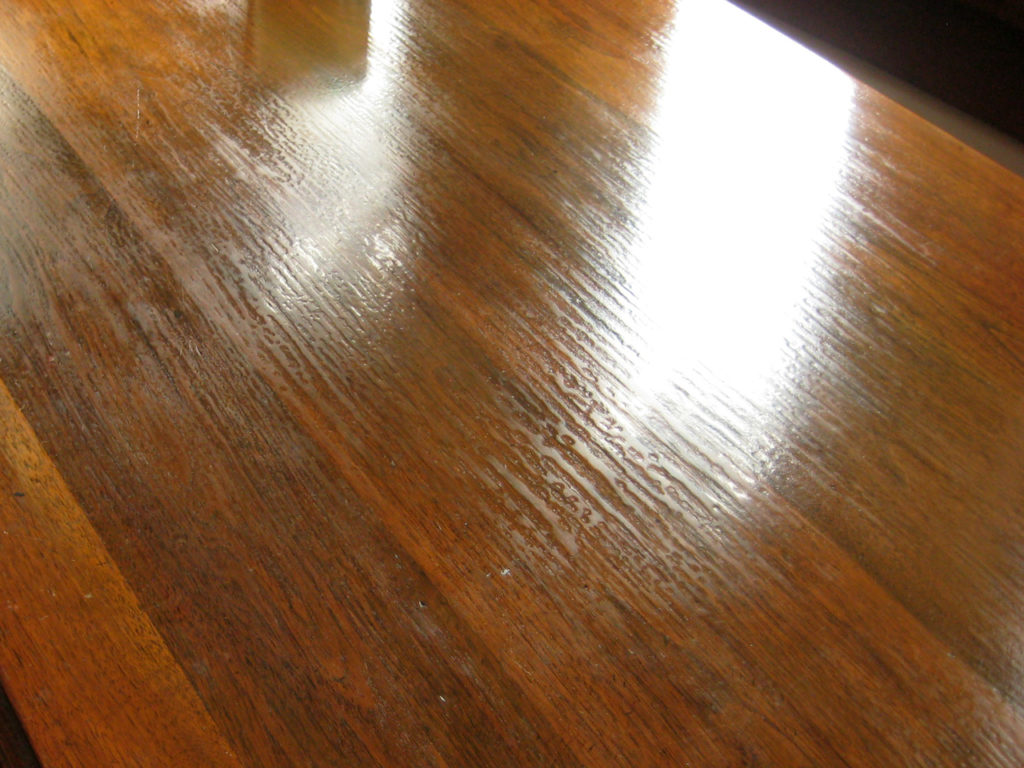We may receive a commission when you use our affiliate links. However, this does not impact our recommendations.

This is the typical way fish eye looks when the finish is polyurethane.
Silicone contamination causing fish eye doesn’t only come from consumers using silicone-containing furniture polishes on their furniture as I’ve been discussing in my last two posts. It can also come from hand and body lotions and from overspray if you use an aerosol polish in your shop to make the furniture you’ve just finished look better.
The problem is that no manufacturers of any products I’m familiar with list silicone as an ingredient. So you don’t know. Why don’t they tell you? Probably because silicone has gotten such a bad reputation from refinishers, conservators, antique dealers and some furniture stores that the manufacturers are afraid of losing sales if they tell you.
Your best defense is to know how to handle the fish-eye problem if it occurs. Go back to my previous post and read again my solutions toward the end of the text.
And to that end, if the finish you’re using is varnish or polyurethane, which is very likely with the Popular Woodworking readership, you’ll find that the fish-eye eliminator, which is silicone oil itself, doesn’t thin well when added to the finish. So thin the silicone oil a little with mineral spirits (paint thinner) first. Then add it.
Here are some supplies and tools we find essential in our everyday work around the shop. We may receive a commission from sales referred by our links; however, we have carefully selected these products for their usefulness and quality.








